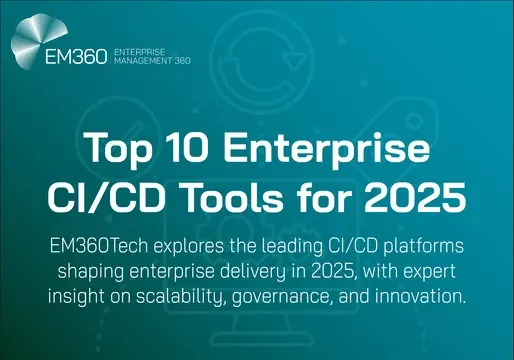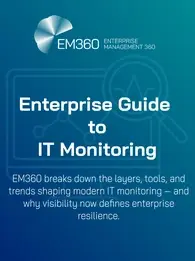
Microservices (or microservices architecture) use a cloud-native architectural approach to software development.
One way of seeing microservices is as a business divided into smaller departments that have their own individual responsibilities. While each department works autonomously, these departments may need to work together to build new services or applications that they can ship to audiences.
Our in-depth article looks at what these microservices are, how they work, and where you would use them.
What is a Microservice?
Microservices use a cloud-native approach to developing software applications.
It means a large application is broken down into a suite of small, independent services that communicate through lightweight application programming interfaces (APIs). Many builds have their own technology stack that can be scaled, developed, and deployed independently of other services being used in your application.
Example of microservices
Remind yourself of the last time you shopped online at an online retailer. While browsing for the perfect product that fits your needs, you may have searched through a selected range of specific products. This could have highlighted the item you eventually purchased.
This item you found and purchased via the product range is a service. And, if you searched for the product via the search bar or recommended products section, these are an additional two services that you used to complete your transaction.
By bringing all the microservices together, your application is able to run smoothly, creating a seamless customer experience.
How do Microservices Work?
Microservices feature a large application that is broken down into smaller services that work with one another. Here is how these builds would be used in an application:
- The application is divided into independent services that have a specific function, making maintenance and development easier.
- Individual set features (search bar, product management, or user authentication) which offer specialised development for teams.
- The services in the application interact via APIs, allowing for standardised information exchanging and integration.
- Various technologies can be used, giving teams flexibility to select the right tools for running and maintaining their microservice.
- Independently update and reduce any system downtime during any major application changes or migrations.
Where Would You Use Microservices?
Microservices are used for accelerating development within large applications. You are likely to use these apps in the following scenarios:
A website migration
A website that is already hosted on a monolithic platform can be migrated to a container and cloud-based platform.
Migrating media content
Media content — including videos and images — can be migrated to microservice architecture styles and be stored in a flexible object storage system.
It means the system can deliver the media assets directly to mobile or web platforms without relying on deeper development and migration stresses.
Data processing
Using microservice platforms offers more support for services that use modular data processing services to process data.
Payment invoices and transactions
Finance and banking applications that have large volumes of transactions and invoices coming in can benefit from using microservice architecture styles.
This means ordering and payment processing can be separated as independent services, allowing for payments to be accepted if invoicing is unavailable for customers.
What Are Advantages of Microservices?
When developing large applications in businesses, microservices is a hugely popular approach.
Due to how the microservice architecture is structured and built, it reflects how business owners and leaders want to run and structure teams, as well as development processes. It means more people can work on your app together, reducing application development times.
Microservices are easy to deploy
Unlike applications that run on monolithic architecture, microservice-based apps are smaller and modular. It means deploying more coordination on application updates, so development teams have more time to resolve other app problems they have.
Easily scalable
The benefit of microservices is that they can be scaled independently within applications. This avoids the likelihood of the application incurring any downtime. App development teams can keep an app running during high demand periods without compromising its performance.
Allows for technological freedom
When building microservice architecture, the app development teams can select the technologies and tools they want to work with. It ensures each development team has the tools and technologies required to run within that specific service of the application.
Increases application’s resilience
The services inside an application with microservice architecture mean that the services run independently and won’t lead to it going offline. It means if one service fails, the entire application will stay online, compared to apps running on monolithic architecture styles.
Makes application development more agile
Using a microservice architecture allows for independent development teams to update, change or replace services without affecting the application. It means the teams have more autonomy and independence, empowering them to fix and upgrade services within the app. This reduces development cycle times for adding new application features or upgrades.
What Should You Consider When Building Apps With Microservice Architecture?
Building applications with microservices requires careful planning to ensure the app runs smoothly across web and mobile-based platforms.
Before building your app with microservice architecture in mind, the development teams involved in production should consider:
Single Responsibility Principle (SRP)
The Single Responsibility Principle (SRP) is a core microservice design principle in developing apps within microservice architecture.
It means each function or service in the app has one business logic that is specific to the task. With the single responsibility principle, it means that individual teams working on the app can work independently to resolve app issues quickly.
This ensures the application development cycles are on track, avoiding any delays each development team may face.
Clear service boundaries
Clearly defined service boundaries are essential for running any application with microservice architecture.
Every microservice must have a clear responsibility for how the services work together inside the app. If your business runs an e-commerce app, you want to ensure the order service accurately reflects the number of properties made for an order by a customer. However, the stock or user services should not store order information unless it has an order ID.
The boundaries must be clear in every microservice API, providing stability and usability to the app.
Small services within teams
It is crucial with apps run on microservice architecture to keep the services small and focused on a single responsibility. By keeping them small, it keeps app development agile while avoiding the services from becoming larger and less productive.
Run regular health checks
Having regular health checks for your apps is crucial for monitoring and alerting any issues with your application.
A HTTP API that detects the health of each service in the app can detect whether a service is online or offline. It means your teams know which services require maintenance to avoid the app incurring downtime, so they can be fixed by the individual team that is running that specific service.
Also, it avoids the microservice architecture from sending requests to unhealthy services in the app.
Run microservice apps on API gateways
Microservices need API gateways to communicate with each other on an application. Having APIs that are secure and scalable is key to restricting any data access from authorised users, servers and applications.
Avoid sharing databases between services
For microservice apps, services should not share data between each other. Sharing databases from one service to another can make scaling apps difficult while also straying away from the single responsibility principle.















Comments ( 0 )